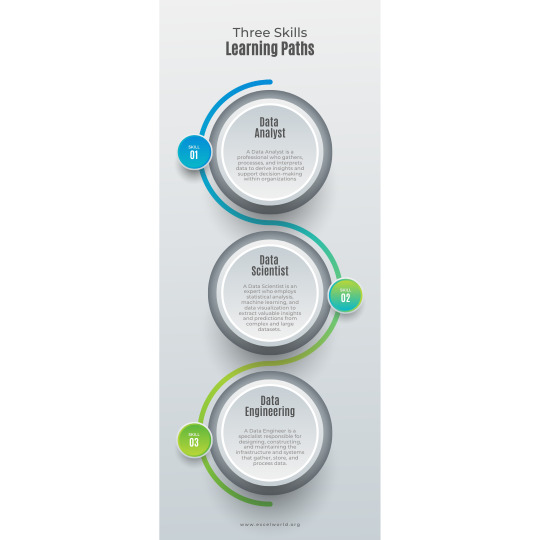#largedatasets
Explore tagged Tumblr posts
Text

#DataScience#DataScientist#StatisticalAnalysis#MachineLearning#DataVisualization#LargeDatasets#Insights#Predictions#ProblemSolving#BusinessDecisions#ToolsandTechnologies#NaturalLanguageProcessing(NLP)#TextData#LanguageTranslation#SentimentAnalysis#Chatbots#DataAnalysis#InformationExtraction#UnstructuredText#ValuableInsights
2 notes
·
View notes
Text
What Is Transfer Learning? And Benefits Of Transfer Learning

A significant advancement in the field of artificial intelligence and machine learning would seem to be the creation of a model that is universally applicable to a wide range of activities and domains. And transfer learning is one such method that has grown in popularity recently. Through the application of transfer learning, machine learning models may accelerate learning overall by using the information they have learned from one task to enhance performance on a related task.
What is transfer learning?
A machine learning technique called transfer learning involves adapting a model that has already been trained on one issue to operate on a related but unrelated topic. The model improves accuracy and speeds up training by reusing learnt characteristics from the first challenge rather than beginning from blank. For example, a model that has been trained to identify things in pictures may be adjusted to identify certain objects, such as vehicles or animals. Because it enables models to transfer information from previously trained data, this method is especially effective in situations when data is limited.
Transfer Learning Models
The Mechanism of Transfer Learning
Fundamental to machine learning, transfer learning is the act of optimizing a previously learned model like a neural network used in deep learning for a new task. The early layers, which capture more broad information, are usually kept, while the ones closest to the model’s output are changed. This procedure is effective because the first few layers of a deep learning model often identify general patterns (such as edges or textures) that may be applied to a variety of tasks.
By altering the last layer, a model trained on the ImageNet dataset to identify thousands of items, for instance, may be reused to categorize medical pictures in transfer learning deep learning. Without having to start the model from scratch, the information gained from identifying generic items is used to the identification of particular medical problems.
Transfer Learning: Why Use It?
Transfer learning is a useful technique in machine learning and deep learning for a number of reasons:
Shorter Training Time: Because the model has already learnt certain patterns or traits, training goes considerably more quickly.
Better Performance: By using previously learnt knowledge, models may often perform better with less data.
Data Efficiency: Transfer learning may be used in situations when standard machine learning is known to encounter a bottleneck due to a lack of labeled data for the new job.
When to Apply Transfer Learning
Transfer learning is useful in the following situations:
For the goal job, there is a little amount of labeled data.
Common elements throughout the challenges include object recognition from various picture datasets.
It would take too long or be too computationally costly to train a model from scratch.
Although the challenge is hard, the likelihood of success is greatly increased by beginning with a pre-trained model.
For example, models such as BERT or GPT in natural language processing (NLP) are pre-trained on large text corpora. For applications like sentiment analysis and text summarizing, they may be adjusted.
Pre-trained model
Implementations of Transfer Learning
Depending on the purpose and model type, transfer learning may be implemented in a variety of ways:
Fine-tuning a Pre-trained Model: Choosing a pre-trained model, freezing certain layers (typically the early ones), and retraining the latter layers to the new goal is the most popular method.
Feature Extraction: The pre-trained model may sometimes be used as a fixed feature extractor, using its acquired features to your job without requiring any model adjustments.
Multi-task learning: This entails teaching a model to execute many related tasks at once so that it may share information across the tasks.
Benefits of Transfer Learning
Enhanced Efficiency: Transfer learning-trained models need less data and computational resources, which makes them perfect for companies and academics with limited resources.
Faster Deployment: Solutions can be scaled and deployed more quickly since the model doesn’t have to learn from start.
Greater Accuracy: By beginning with features acquired from large datasets, pre-trained models perform better.
Versatility: Transfer learning may be used in a wide range of fields, including financial forecasting, medical diagnostics, and natural language processing in addition to picture categorization.
Drawbacks with Transfer Learning
Overfitting: Overfitting may occur when the task performed by the pre-trained model deviates too much from the goal task.
Data Bias: A pre-trained model’s performance in the new task may be impacted by biases derived from the data used for its original training.
Restricted Transferability: Not every model or job may be used with another. When there are substantial parallels between the source and target activities, transfer learning is most effective.
In summary
Machine learning has undergone a revolution thanks to transfer learning, which enables models to use previously acquired information, speeds up training, increases accuracy, and facilitates the use of ML approaches in situations with sparse data. The method’s generalizability across tasks, in spite of some difficulties, makes it an invaluable resource for academics and enterprises seeking to effectively implement AI solutions.
Transfer learning in deep learning and other areas will remain essential to extending the potential applications of artificial intelligence as machine learning develops. And to become an expert in the field of AI and machine learning, you need to sign up for Purdue University’s unique Post Graduate Program in AI and Machine Learning, which will teach you all the best techniques and resources in only 11 months!
Read more on Govindhtech.com
#Transferlearning#artificialintelligence#machinelearning#neuralnetwork#deeplearning#naturallanguageprocessing#largedatasets#News#technews#technology#technologynews#technologytrends#govindhtech
0 notes
Text

#DataScience#StatisticalAnalysis#MachineLearning#DataVisualization#PredictiveModeling#InsightExtraction#BusinessDecisionMaking#ProblemSolving#Expertise#ComplexDatasets#LargeDatasets#ProgrammingLanguages#Python#R#DataVisualizationTools#Matplotlib#Seaborn#Plotly#MachineLearningLibraries#scikitlearn
1 note
·
View note